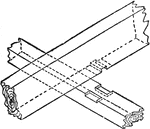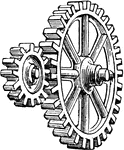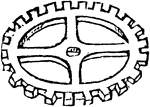Clipart tagged: ‘cog’

Cog-wheel
"A small projection in machinery, used to impart motion. C. wheel, a wheel having cogs on its…
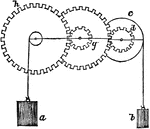
Gears
"It is found preferable, therefore, when a great difference of velocity is required, to use a combination…
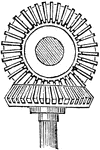
Mitre-wheels
"2 wheels revolving in contact, but in different planes, so as to transfer motion from one plane to…
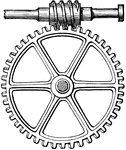
Endless Screw and Wheel
"Endless screw, a mechanical arrangement consisting of a screw the thread of which gears into a wheel…

Scroll Wheel
"a, scroll-wheel, intermeshing with the pinion b, which, sliding by a feather on the shaft, c, imparts…
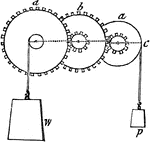
System of Wheels
"System of Wheels.—As the wheel and axle is only a modification of the simple lever, so a system…
